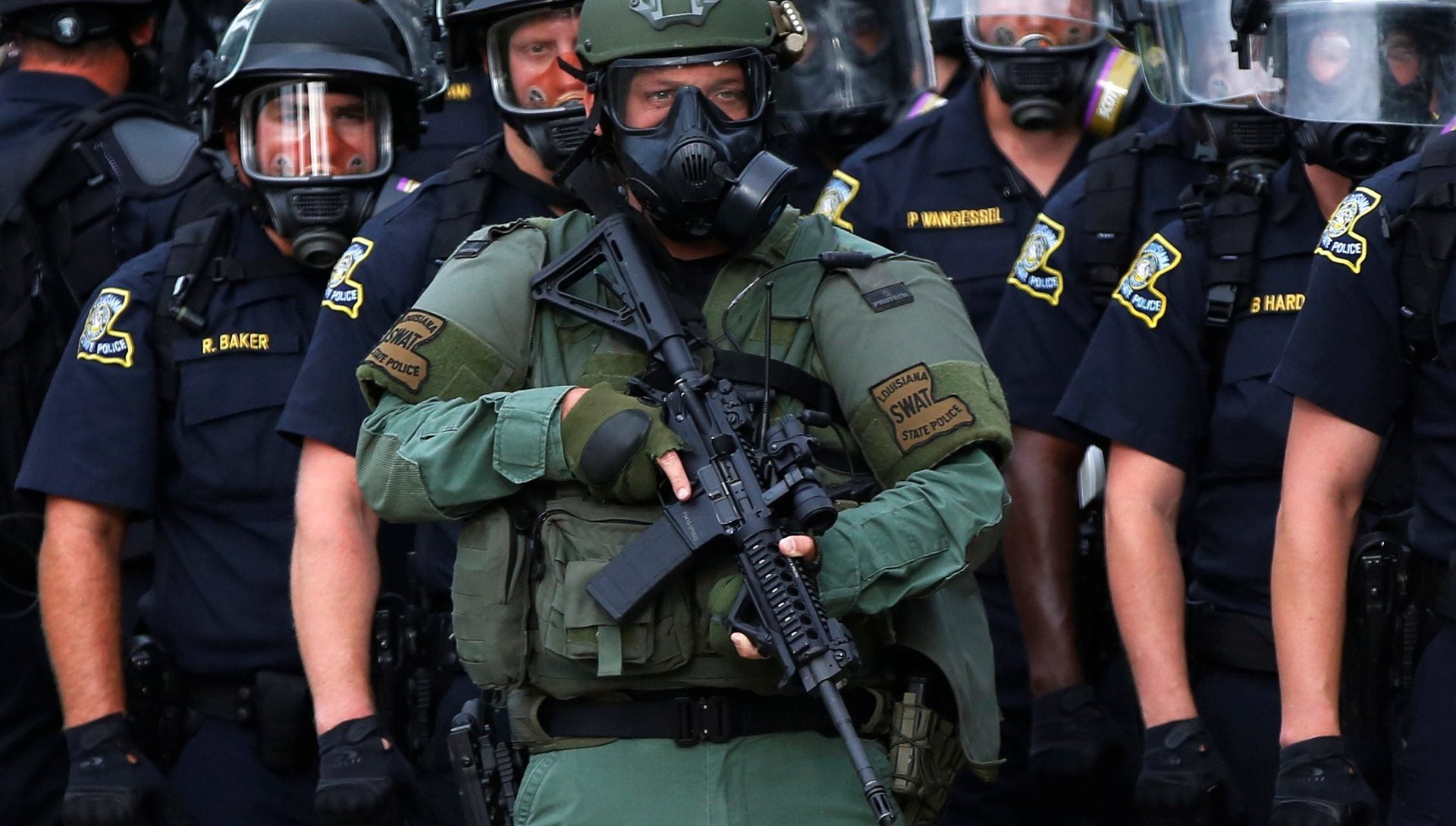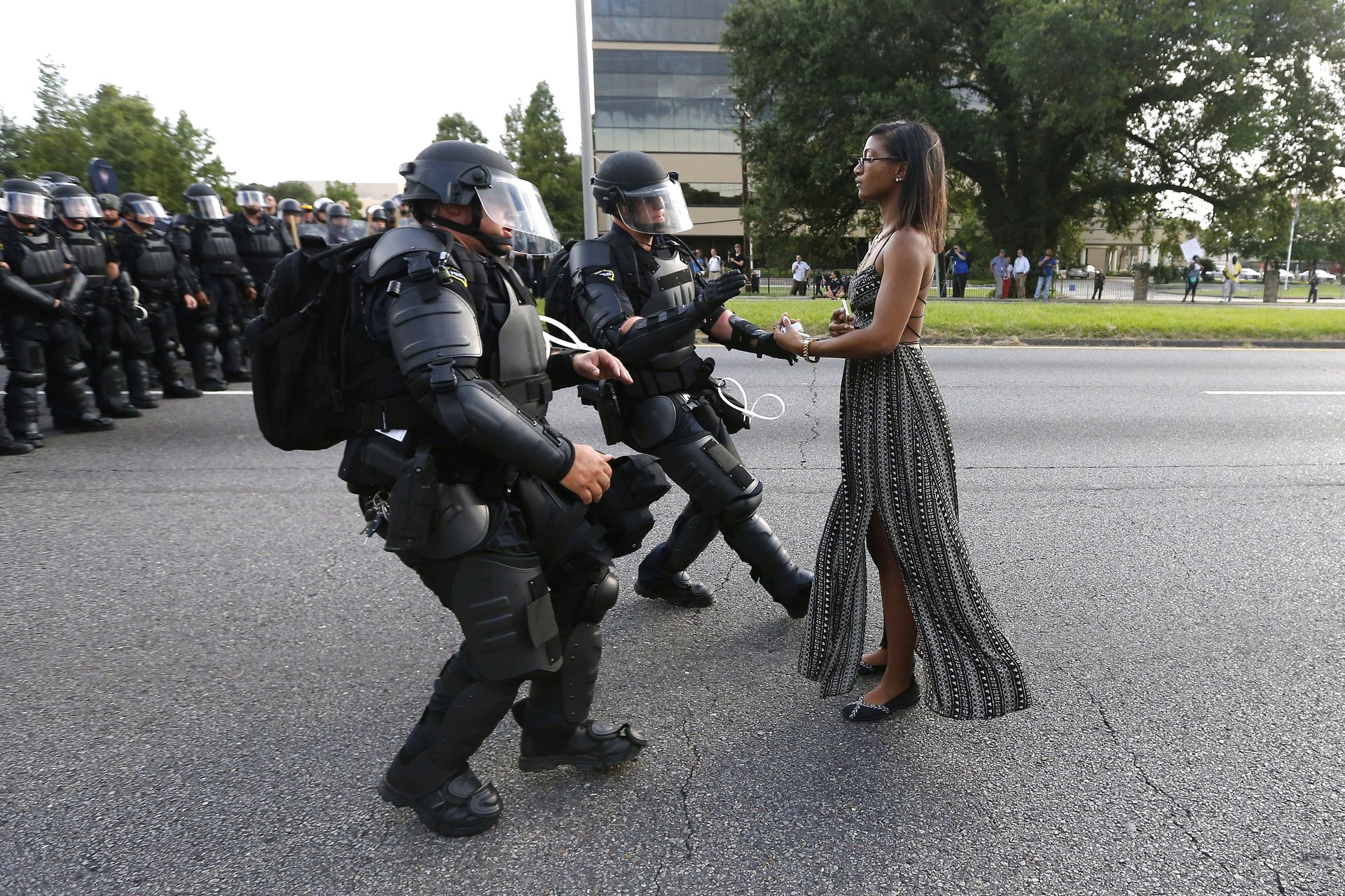Why do American police officers dress like soldiers, and does it actually keep anyone safe?
As thousands of people took to the streets of St. Paul, Baton Rouge, Phoenix, New York, Rochester and other cities across America this weekend, they were confronted with phalanxes of shielded, masked officers in head-to-toe military-grade riot gear. More than 300 protesters were arrested at the demonstrations, which followed two videotaped incidents of police killing black men last week.


As thousands of people took to the streets of St. Paul, Baton Rouge, Phoenix, New York, Rochester and other cities across America this weekend, they were confronted with phalanxes of shielded, masked officers in head-to-toe military-grade riot gear. More than 300 protesters were arrested at the demonstrations, which followed two videotaped incidents of police killing black men last week.
The images coming out of these protests point to a controversial aspect of modern-day policing: the militarization of law enforcement. One photo, of a Baton Rouge mother and nurse wearing a sundress as she’s approached by a row of battlefield-ready police, has already become iconic:

In Baton Rouge, where Alton Sterling was shot and killed while he was pinned to the ground by police officers on July 5, law enforcement let the community protest without much interference in the days following the killing. Over the weekend, however, police came out in armored vehicles, and marched in formation to close in on a group of protesters who said they were standing on private property.
Scenes like this echoed all across the country:
The demonstrations were not all peaceful. In Phoenix, protesters threw rocks at the police. In St. Paul, Minnesota, near where motorist Philando Castile was shot on July 6, the demonstrations turned violent. More than 100 were arrested.
The police response to the recent protests has drawn comparisons with the heavy-handed reaction to demonstrations in 2014 after the shooting of Michael Brown in Ferguson, Missouri, which drew much criticism at the time.
One difference, of course, is this is the week following the killing of five police officers by a lone sniper in Dallas during a protest on July 8. Dallas police did not wear tactical gear that evening, only summer uniforms.
But whether tragedies like that could be prevented with full body armor and army-style trucks is debatable, argues Radley Balko, author of Rise of the Warrior Cop: The Militarization of America’s Police Forces, in The Washington Post. A threatening police cordon could be counterproductive, he argues, provoking violence by “giving troublemakers and peaceful protesters a common enemy.”
“Unless we’re prepared to have cops permanently outfitted with heavily armored vehicles and full riot gear at every public event,” he writes, “it’s unclear how the Dallas shootings demand that protests in particular require a militarized response.”
In 2015, following the aftermath of Ferguson, president Obama banned the government from providing some military equipment to police departments, to avoid “undermining community trust.”
The widely respected Dallas PD does have military equipment, which it used in the aftermath of the shooting. Specifically, technicians deployed a bomb robot to kill the alleged shooter, Micah Xavier Johnson. This marked the first time the technology was used to kill a civilian in the United States, and raised further concerns about the ethics of lethal force.
Police departments all around the country have been receiving unused military equipment since the late 1990s under a program at the US Department of Defense. But the real shift in local law enforcement behavior came after 9/11 when police became part of the “War on Terror.”
Local police departments have at their disposal heavy arms including tanks, armored vehicles and bazookas—some of which have become everyday patrolling equipment. But as the Atlantic pointed out in 2011, the most troubling consequence of police militarization is not the battle-ready equipment, but a change in mentality, where police officers are trained not as “peace officers” but as soldiers.